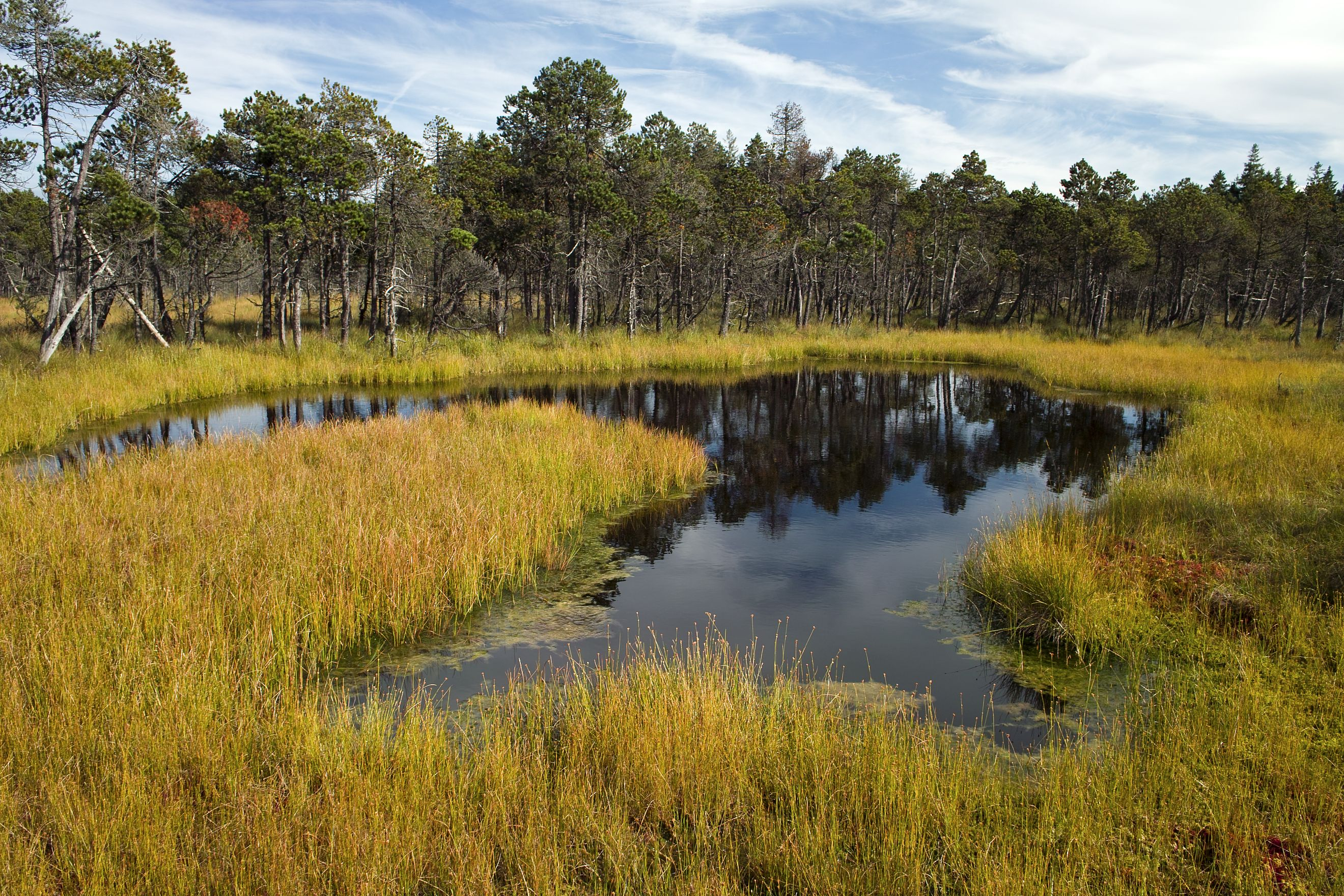In order to establish a sustainable conservation strategy for bogs and near-natural moor woodlands the close cooperation with regional actors - particularly farmers and landowners - is crucial. In the Allgäu region traditional forms of extensive agriculture relevant for an intact moor landscape are still in practice. This offers good opportunities for the stakeholder-based approach adopted by the “Allgäuer Moorallianz” initiative.
“Allgäuer Moorallianz” is mainly funded by a large-scale nature conservation project (2009-2022), under the funding scheme chance.natur (for more details see the section “Cost and Benefits”). The overall project area includes more than 185,000 ha, located in two administrative districts (the Oberallgäu and the Ostallgäu, both with a population density of around 100/km2). Within this region landscape management, education, tourism and awareness building measures have been implemented or supported by the Moorallianz aiming at integrating moor protection with regional development and tourism.
In 2009 the large-scale nature conservation project started with a so-called development phase. During the first four years “Allgäuer Moorallianz” conducted a process to set up a development plan (PEPL - Pflege und Entwicklungsplan). The aim of the development plan was to get an overview of mire areas valuable to nature conservation and possible strategies to preserve and improve them. As a first step, a moor inventory of species and habitats and a water balance assessment were carried out. With this knowledge Moorallianz developed primary objectives and possible measures for different habitat types and endangered species; these are listed below together with the extension of the area they apply to as defined by the PEPL:
- Maintaining and improving the status of near-natural bogs and bog woodlands: 535.7 ha;
- Restoration of degraded raised bogs still capable of natural regeneration: 2,315.7 ha;
- Extensive management of near-natural open-land habitats and forests: 1,680 ha;
- Keep fallow areas open in near-natural open-land habitats and forests: 485 ha;
- Restoration (after fallowness) of extensive grassland: 310 ha;
- Long-term management of extensive grassland: 1,115 ha;
- Conservation of a grassland buffer zone: 280 ha.
In 2012 the PEPL was finalised and the implementation phase of the large-scale nature conservation project started with a term of 10 years. As the implementation of the entire, wide-ranging PEPL is not possible during this time period, focus areas have been defined in close cooperation with all stakeholders (landowners and stakeholders from the agriculture, forestry and tourism sectors). Identified priorities mirror three different types of measure:
- Hydrological restoration (e.g. re-wet formerly drained bogs);
- Prevention of eutrophication; and
- Landscape management measures (e.g. keep up the traditional mowing to save meadow habitats of high biodiversity in the surrounding area or traditional forms of extensive bog forest management).
Between 2012 and 2017 the Moorallianz initiative was able to purchase around 180 ha of raised and low bog areas implementing regeneration or landscape conservation management measures. Until the end of the large-scale nature conservation project in 2022 the Moorallianz will continuously buy bog habitat area and extend nature conservation measures. The “Seemoos” bog area provides an example of implemented measure. This degraded bog landscape used to be drained by many ditches with a total length of 12 km. These ditches are now dammed up again, so that the water can be held in the bog area. The “Seemoos” is one of the degraded bogs still capable of natural regeneration with a very high restoration potential.
In addition to these measures, the initiative also focuses on awareness-raising and environmental education. Together with regional partners Allgäuer Moorallianz started a “Moor campaign” presenting the importance of the Allgäuer moors area as a formative element of the local landscape. This campaign includes activities such as: a circulating moor exhibition, provision of educational material and excursions for schools and youth groups.
The nature conservation measures of “Allgäuer Moorallianz” give highly endangered habitats and specialized moorland species (such as glacial relict remnants) a chance to survive also under the expected changing climate conditions. Another co-benefit of the moor conservation in the Allgäu region is the maintenance and improvement of moor ecosystem services such as climate regulation, provisioning of water, water purification and cultural services (recreation).



